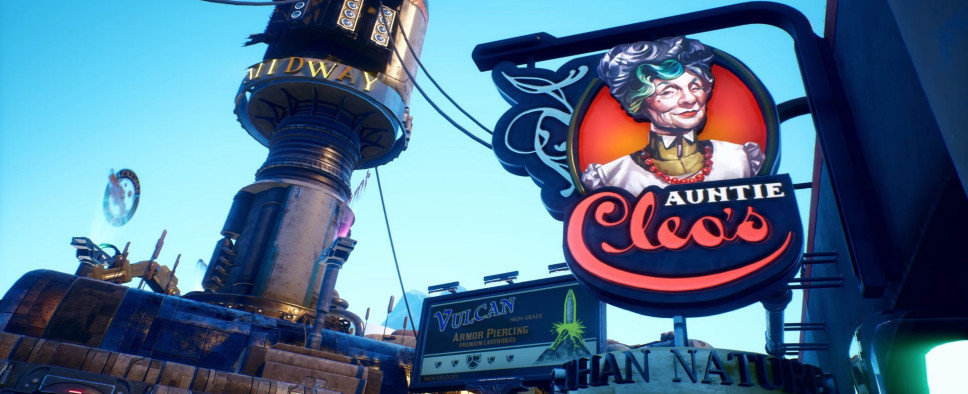The Outer Worlds - Playing Your Way and a Look at the Universe
-
Category: News ArchiveHits: 1757

A couple of fresh features dedicated to Obsidian Entertainment's upcoming sci-fi RPG The Outer Worlds is now available over at GameInformer. In the first one, Tim Cain and Leonard Boyarsky talk about The Outer Worlds' approach to morality, choices and consequences, and good and evil options. Here's an excerpt:
While the story does have choices and characters at different places along the good/evil spectrum, The Outer Worlds isn’t necessarily about picking a moral alignment and sticking to it. ‘It’s not “here’s the good choice, here’s the bad one,’” Cain says. “Instead, it’s like, ‘You could this or this. This will cause X, this will cause Y. You decide what you care about.’”
“But it’s not always extreme gray areas,” Boyarsky clarifies.
“What if the more evil choice has an obviously better outcome?” Cain says. “What if more people are saved by the evil choice? But it’s evil! But the result is better! Is it a worse choice? I don’t know if you can solve morality with arithmetic, but there are some things in the game where you’re like, ‘I am not sure if this is bad.’”
It all boils down to giving players options that allow them to form an entertaining and consistent vision of their character. If you want to be noble and avoid working with bad people, that’s an option. If you want to kill everybody (well, almost), you can do that too. You can say things that are nice or mean, smart or dumb. The game will track many different variables regarding your actions, so you never know how you might see your choices reflected in a given scenario.
And the second one is all about the game's avaricious corporation-ruled universe, the locations you'll get to visit, and the alternate history that fuels all of it. A few sample paragraphs:
One of the habitable worlds, Terra 1 was a moon orbiting a massive gas giant called Olympus. Human terraforming didn’t work on the planet, and among other problems, much of the local fauna was dramatically altered, sizing it up into mega versions that pose tremendous threats to human life. In-game, Terra 1 has been renamed as Monarch, and it’s a dangerous place to live. It’s also where the board’s outsized influence has begun to fray, as many groups and individuals are rebelling against the companies.
For players, Monarch will replicate some of the expectations of an open-world space, but on a smaller scale. “Monarch has a bigger wide-open playspace,” Boyarsky says. “There’s three or four different little towns on Monarch. Because it has a big, wide-open area, you can walk between them, or just fly to the different ones in your ship once you unlock the landing pads.”
The other comfortably habitable planet orbiting the Halcyon star is called Terra 2, and it remains much more under the sway of the board. Here, the colonists have largely accepted and even embraced their roles as corporate workers, but the façade is slowly breaking down, as towns slowly fall into disarray. Marauding thugs who have abandoned the company life wander around outside the towns. And even inside, the appearance of homey comfort has begun to fray as prefab structures have begun to fall apart and jobs remain unfilled, even as the various companies try to keep up good appearances.

